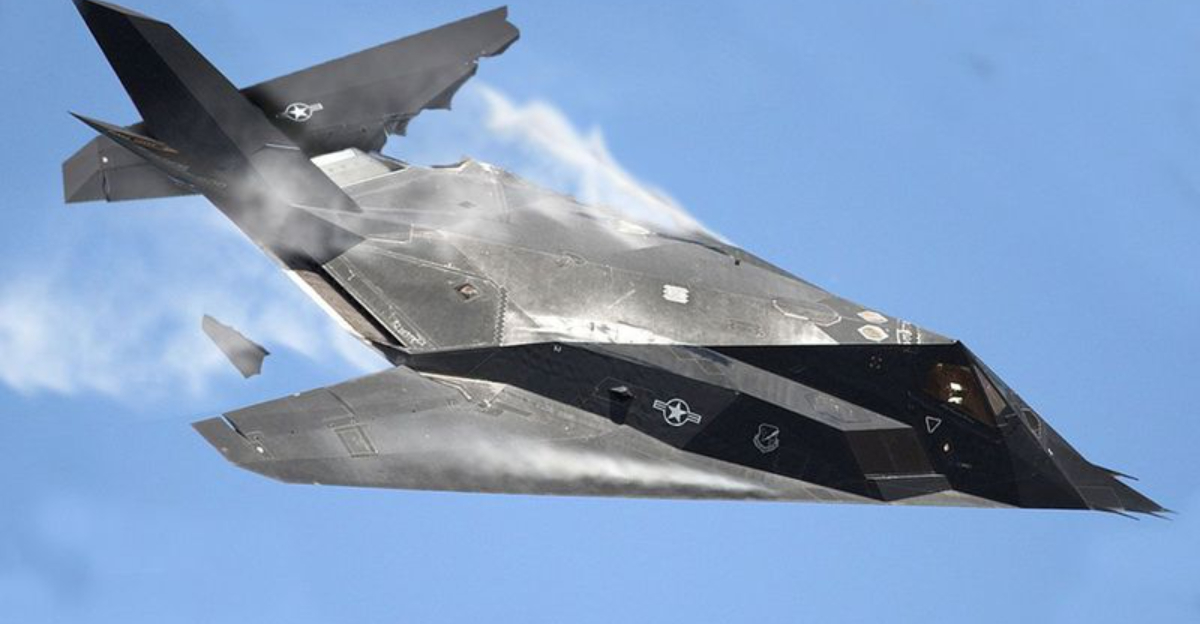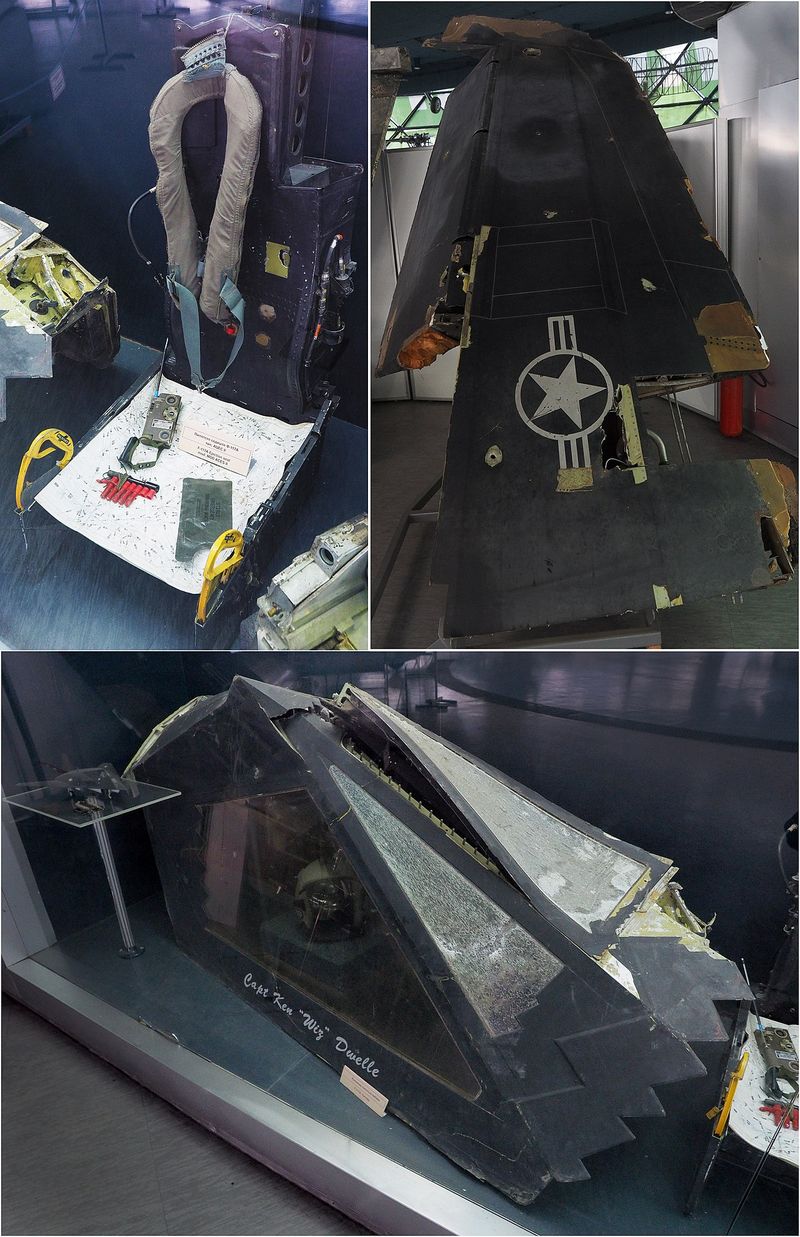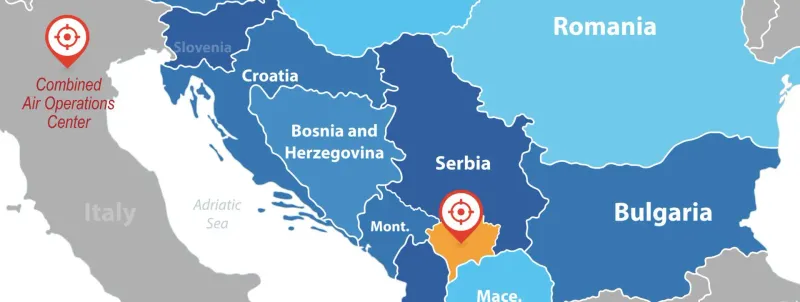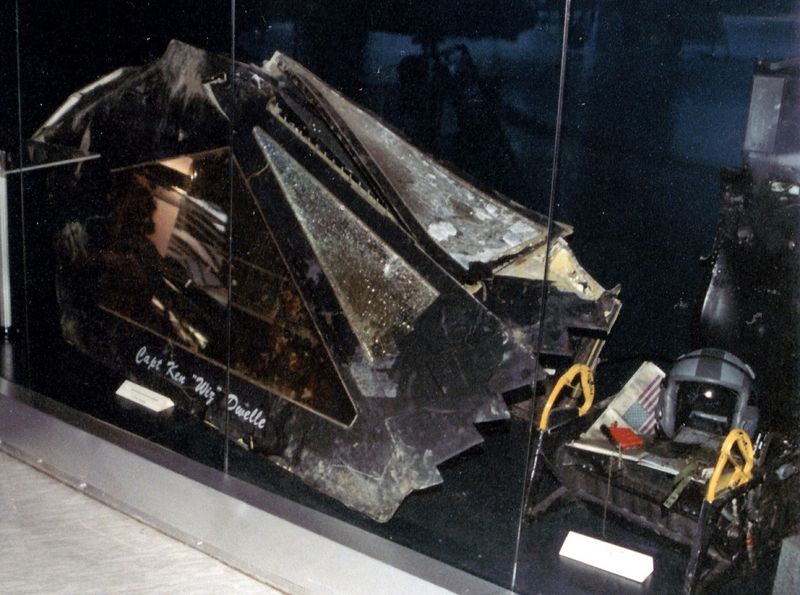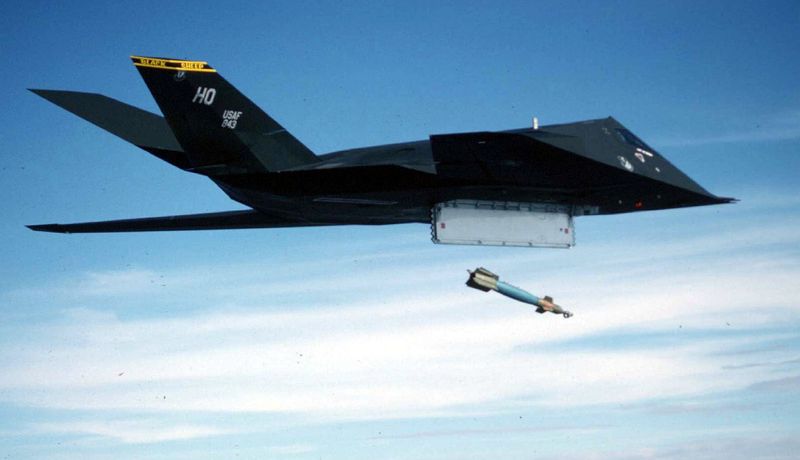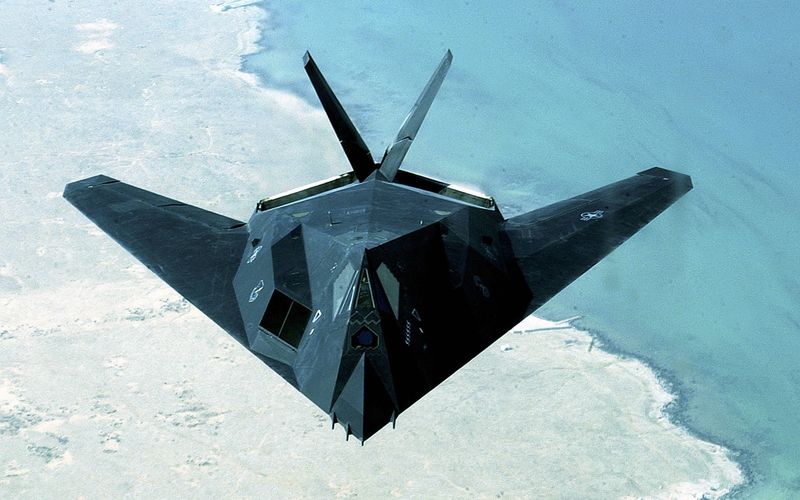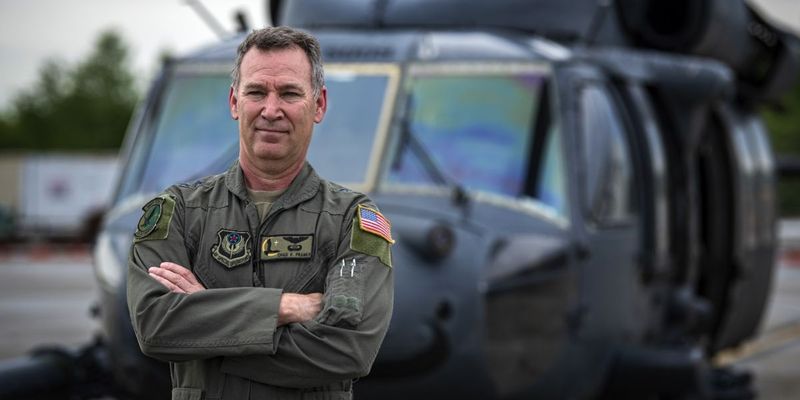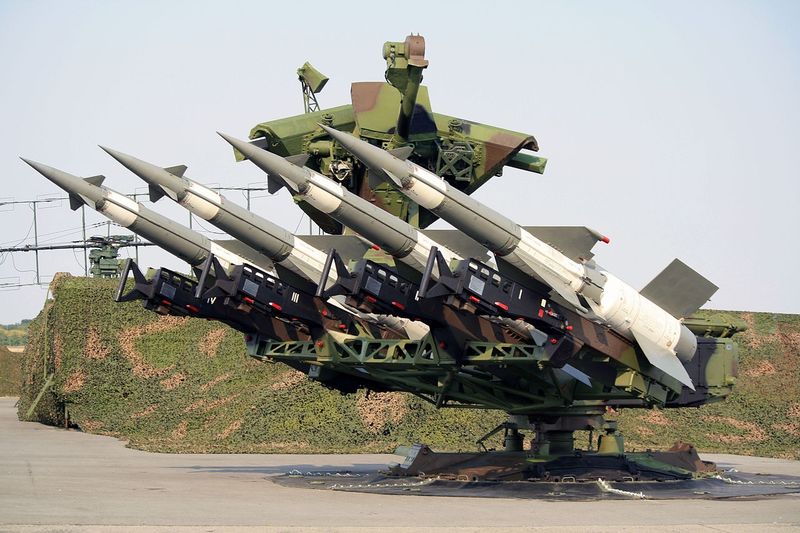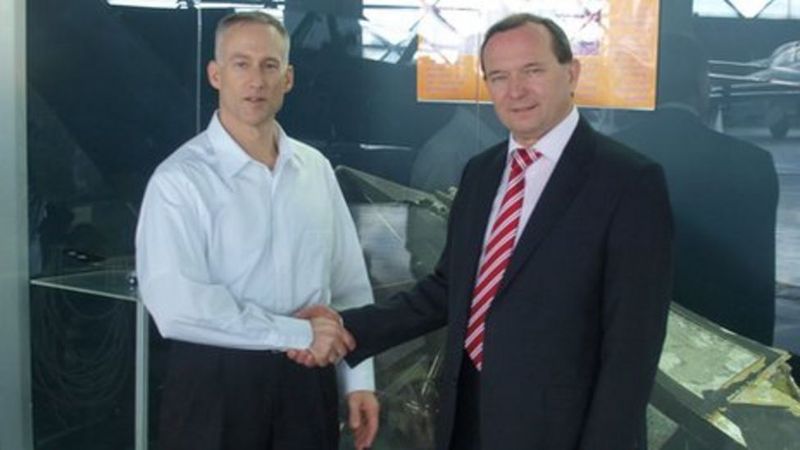On March 27, 1999, something unprecedented happened in military history. A Serbian anti-aircraft unit managed to shoot down what was thought to be invisible – an American F-117A Nighthawk stealth fighter.
This shocking event during NATO’s bombing campaign against Yugoslavia changed how we think about stealth technology.
Let’s explore how this seemingly impossible feat occurred and what it meant for modern warfare.
1. Ghost in the Night: The F-117A Nighthawk
Angular, black, and menacing, the F-117A Nighthawk represented America’s most advanced stealth technology in 1999. Built by Lockheed, this aircraft wasn’t actually a fighter despite its nickname – it was a precision bomber designed to slip past enemy radar.
Its unusual faceted design wasn’t for aesthetics but calculated to deflect radar waves away from receivers. Covered in radar-absorbing materials and carrying weapons internally rather than externally, the Nighthawk had successfully completed over 1,300 combat missions without being shot down.
Lt. Col. Dale Zelko piloted this particular aircraft, callsign “Vega 31,” on what would become its final mission.
2. Operation Allied Force: The Kosovo War Context
NATO launched Operation Allied Force on March 24, 1999, to stop Yugoslav President Slobodan Milošević’s campaign against ethnic Albanians in Kosovo. This 78-day bombing campaign targeted Yugoslav military infrastructure and command centers.
American F-117As were considered the perfect weapon for striking high-value targets in heavily defended areas. They could penetrate dense air defenses around Belgrade that would be too risky for conventional aircraft.
The mission on March 27th was routine – strike a target near Belgrade and return to base in Italy. No one expected it would result in one of military aviation’s most stunning upsets.
3. Serbian Ingenuity: The Hunters and Their Tactics
Colonel Zoltán Dani commanded the 3rd Battalion of the 250th Air Defense Missile Brigade – the unit that achieved the impossible. Rather than using their Soviet-built S-125 Neva surface-to-air missile system as instructed, they modified it.
Serbian forces developed clever countermeasures against stealth technology. They used extremely low frequency radars, operated their systems for only brief periods to avoid detection, and constantly relocated their mobile launchers to prevent being targeted.
Most brilliantly, they monitored NATO aircraft radio communications and observed predictable flight paths that the stealth aircraft followed night after night.
4. The Perfect Storm: How Stealth Became Visible
Rainy weather on March 27th created moisture-laden air that may have affected the F-117’s radar-absorbing coating. Additionally, the aircraft’s bomb bay doors had opened to deploy weapons, temporarily increasing its radar signature.
Serbian radar operators caught a brief glimpse of something unusual on their screens. Taking a calculated risk, they fired two missiles toward the anomaly without perfect lock-on.
The Nighthawk’s predictable flight path proved fatal. Flying the same route repeatedly had allowed Serbian forces to position their batteries optimally and anticipate exactly where the aircraft would appear, even without continuous radar tracking.
5. Fiery Descent: The Moment of Impact
At 8:15 PM local time, an explosion rocked the night sky near the village of Buđanovci. The first missile had missed, but the second struck the F-117’s left wing. Lieutenant Colonel Zelko immediately lost control of the aircraft as warning lights flooded his cockpit.
“I never saw the missile coming,” Zelko later recalled. The aircraft began spinning violently, forcing him to eject at 8,000 feet. As his parachute deployed, he watched his $42 million aircraft plummet in flames.
Local residents reported seeing a fireball streaking across the sky before impact. The supposedly invincible had been vanquished.
6. Race for the Wreckage: A Technology Treasure Trove
Serbian forces raced to the crash site, arriving before American rescue teams could secure it. What they found was a goldmine of classified technology scattered across farmland. Civilians joined soldiers in collecting pieces of the wreckage as souvenirs.
Major pieces of the aircraft, including the distinctive cockpit section with its advanced avionics, were quickly transported to Belgrade. Military officials proudly displayed parts of the downed Nighthawk on television – a propaganda victory as significant as the military one.
Rumors persist that China and Russia received samples of the stealth materials, potentially accelerating their own stealth programs by years.
7. The Pilot’s Ordeal: Survival Behind Enemy Lines
Lt. Col. Zelko parachuted into hostile territory with a sprained shoulder and injured back. Using his survival radio, he established contact with rescue forces while evading Serbian patrols searching for him with flashlights.
For nearly eight hours, Zelko hid in a drainage ditch, covered by his parachute for warmth. Local farmers passed within yards of his position. Throughout the ordeal, he maintained radio discipline, using coded language to communicate with rescue aircraft circling overhead.
Finally, a daring Combat Search and Rescue team extracted him via helicopter in the early morning hours – a successful rescue that prevented a diplomatic crisis.
8. Global Shockwaves: Military Implications Worldwide
The Pentagon initially downplayed the incident, but military strategists worldwide recognized its significance immediately. If a 1960s-era Soviet missile system could down America’s most advanced stealth aircraft, what did that mean for the future of air warfare?
Military analysts identified several painful lessons: stealth alone wasn’t enough; predictable tactics could neutralize technological advantages; and older weapons could still threaten advanced aircraft when used creatively.
For China and Russia, the shootdown provided both technical intelligence and strategic confidence. Their military leaders realized that asymmetric approaches could counter American technological superiority – a lesson that shapes their defense strategies even today.
9. Unexpected Friendship: Enemies Become Brothers
In an extraordinary epilogue, pilot Dale Zelko and the man who shot him down, Colonel Zoltán Dani, met in Serbia in 2011. Their emotional reunion became the subject of a documentary titled “The Second Meeting.”
“He was just doing his job, as I was doing mine,” Zelko explained. The two former enemies developed a genuine friendship, with Zelko visiting Dani’s home and meeting his family. Dani, who left the military after the war to open a bakery, showed Zelko pieces of the F-117 he kept as mementos.
Their unlikely bond symbolizes reconciliation after conflict – perhaps the most positive outcome from that fateful night in 1999.
